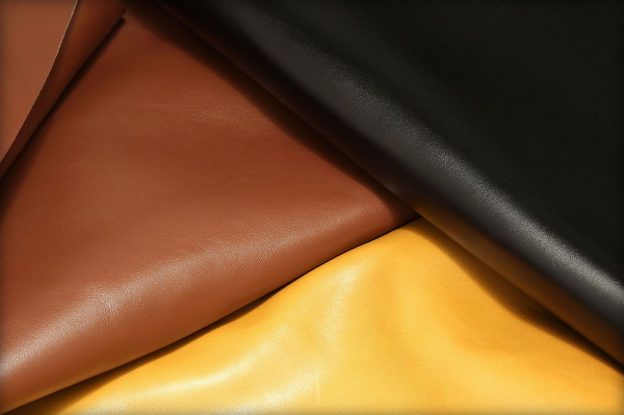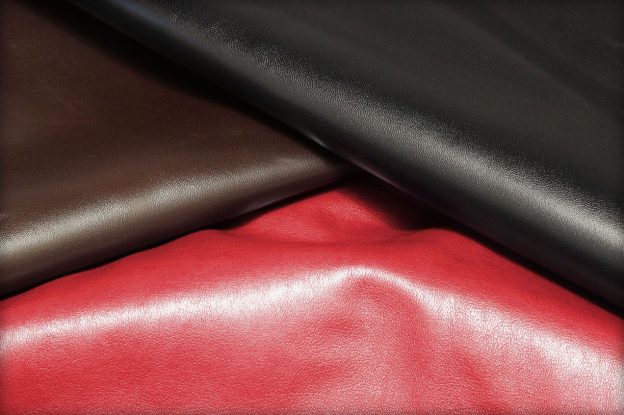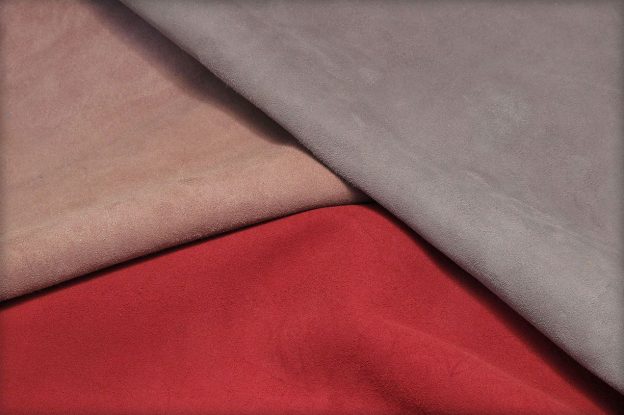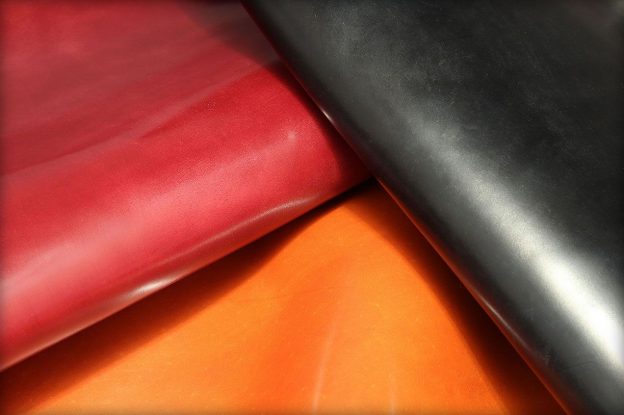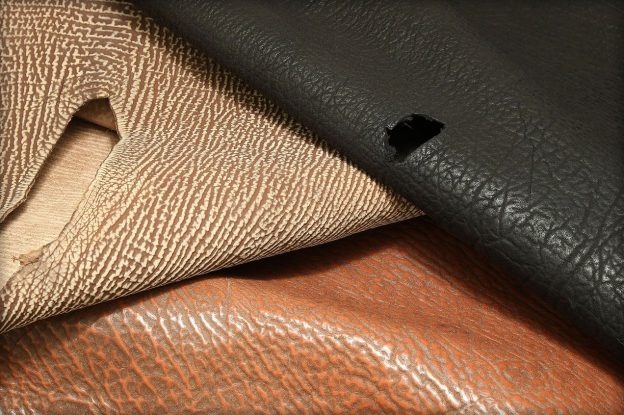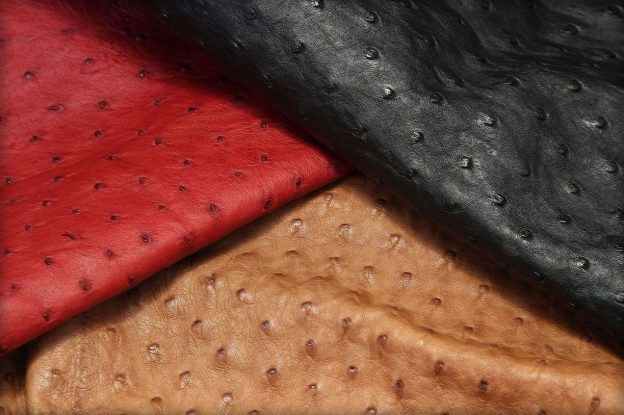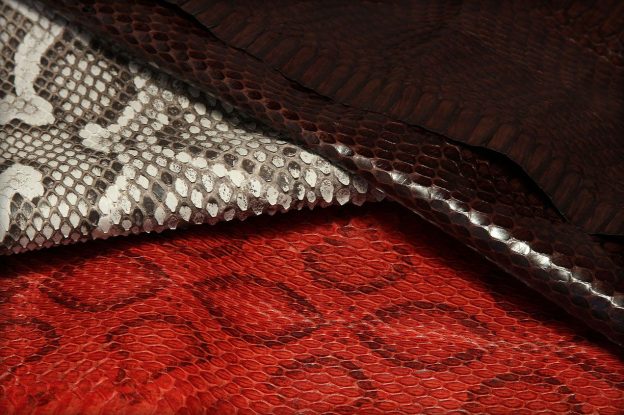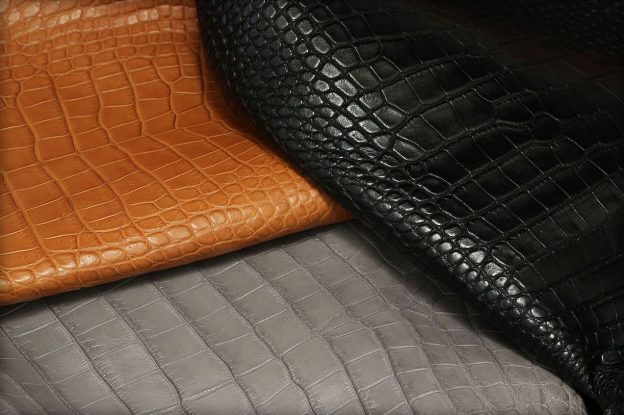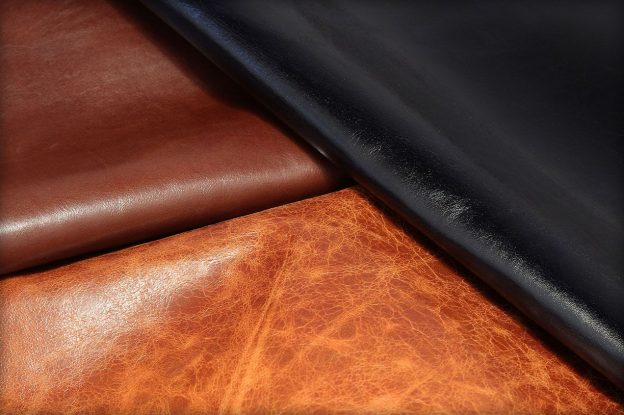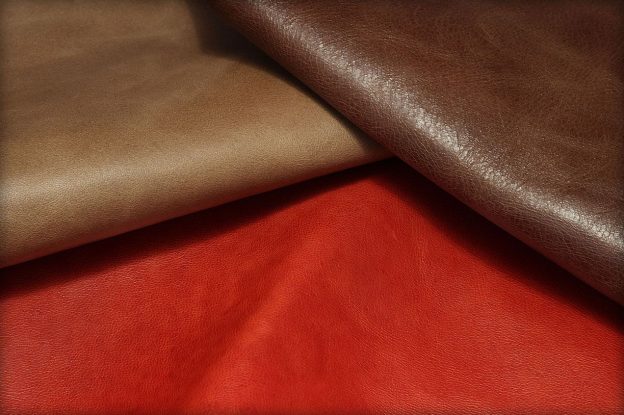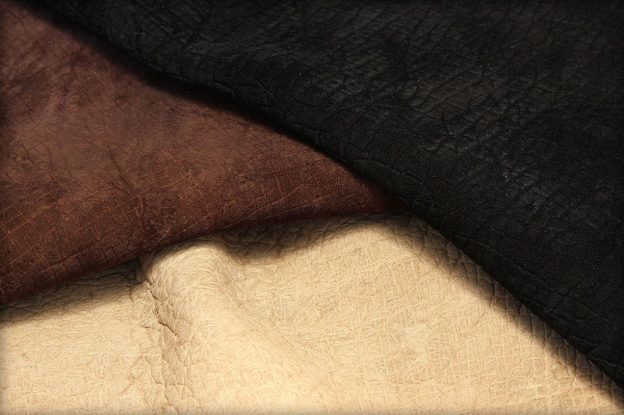Leathers
Uppers
The uppers of the shoes we make are sewed using nothing but carefully selected natural leathers, making them very comfortable and durable, exceptionally attractive and highly weather resistant. The leather used in the linings is vegetable tanned and lacks a protective coating. This enables it to absorb moisture and ensures that it has a neutral effect on the human foot.
We procure all of our leathers from renowned European and American tanneries. We obtain exotic hides from legal sources, in accordance with the Washington Convention CITES of 1973 , whose goal is to protect endangered animals and plants living in the wild.
Calf leather
Calfskins are the most suitable type of leather for the upper parts of luxury shoes. They are characterized by a beautiful and easily maintained grain, and their taut structure makes them highly resistant to unfavorable weather conditions. We reserve thin skins measuring between 0.8 and 1.0 mm in thickness and ranging in size from 1.0 to 1.4 square meters for men’s evening shoes and women’s shoes. Thicker skins measuring around 1.2 mm are used for men’s everyday shoes and boots. In our workshop we use chrome tanned leather from Polish, French, German and Italian tanneries.
Suede
Very delicate, velvety leather with a napped finish. It is made from the underside of the skin. Because it lacks a grainy exterior layer, it breathes extremely well and is quite soft. Shoes made of suede are very comfortable. Suede up to 1 mm in thickness is made from the skin of sheep and goats, while suede exceeding 1 mm is made of calfskin.
Shell Cordovan
Leather between 1.2 and 1.6 mm thick is made from the rump of a horse. A special production process renders it exceptionally resistant to damage and leaking, making it an ideal choice for men’s fall and winter shoes. The best Cordovans come from the US and Argentina. They are also produced in Spain, Italy and Japan.
Shark leathers
The characteristic striped skin of the shark is among the most resilient types of skin. Although sharks attain massive proportions in the wild, only small specimens are used in the leather trade. Their skins measure between 1.0 and 1.6 mm in thickness and can have either a grained or a matte finish. The skins used in our workshop come from Mexico and Japan.
Ostrich leathers
These leathers are distinguished by the distinctive bumps left behind by thick feathers. Thanks to the numerous pores on the surface, the skin breathes very well and its softness makes it ideal for fitting to the shape of the foot. Shoes made of this leather are considered to be particularly comfortable. Ostrich farms may be found throughout the world. However, farms in the Republic of South Africa have long produced the highest quality hides.
Alligator leather
This is the most expensive and most coveted skin in the world. Despite the large, tough scales, advanced technological processes make it possible to obtain skins that are surprisingly soft. In the past decade, nubuck skins have aroused great interest alongside traditional, grained skins. Their varying thickness, ranging from 0.8 to 1.3 mm, depends on the animal’s sizes and species. In shoemaking, every shoe should be made from a single small skin roughly 35 cm in width. The best part is the belly, which due to its softness is considered more luxurious than the dorsal part. The leather used in making purses is cut from skins that can exceed 60 cm in width. The largest specimens living in the wild may weigh up to a ton and measure more than 7 meters in length. But in farms they are usually about a third of this size. Breeding farms are located in tropical regions in North and South America, Asia and Australia.
Kangaroo leathers
Worth considering due to their excellent usability. They are lightweight, thin, strong and highly durable. Kangaroos live in the wild amid thorny shrubs, so their skin is often covered with small scars. They measure around 1 mm in thickness. They come, of course, from Australia, some parts of which are truly plagued with them.
Elephant leathers
Skin from the sides of the largest land mammal can measure up to 4 square meters in area. It is highly irregular in texture and thickness. Elephant skins used in shoemaking and leather working are expected to measure 1.5 to 2 mm in thickness. They usually have a grained or nubuck finish, and are most often naturally earth-toned in color. The top exporters of elephant skins are the Republic of South Africa and Namibia.
Hippopotamus leather
These are similar to elephant skins, only thicker – between 1.5 and 2.5 mm. They are frequently covered with bruises and scars. They are tanned only as soft nubucks in natural colors. The supply of hippopotamus skins is extremely limited, which always makes them an attractive rarity.

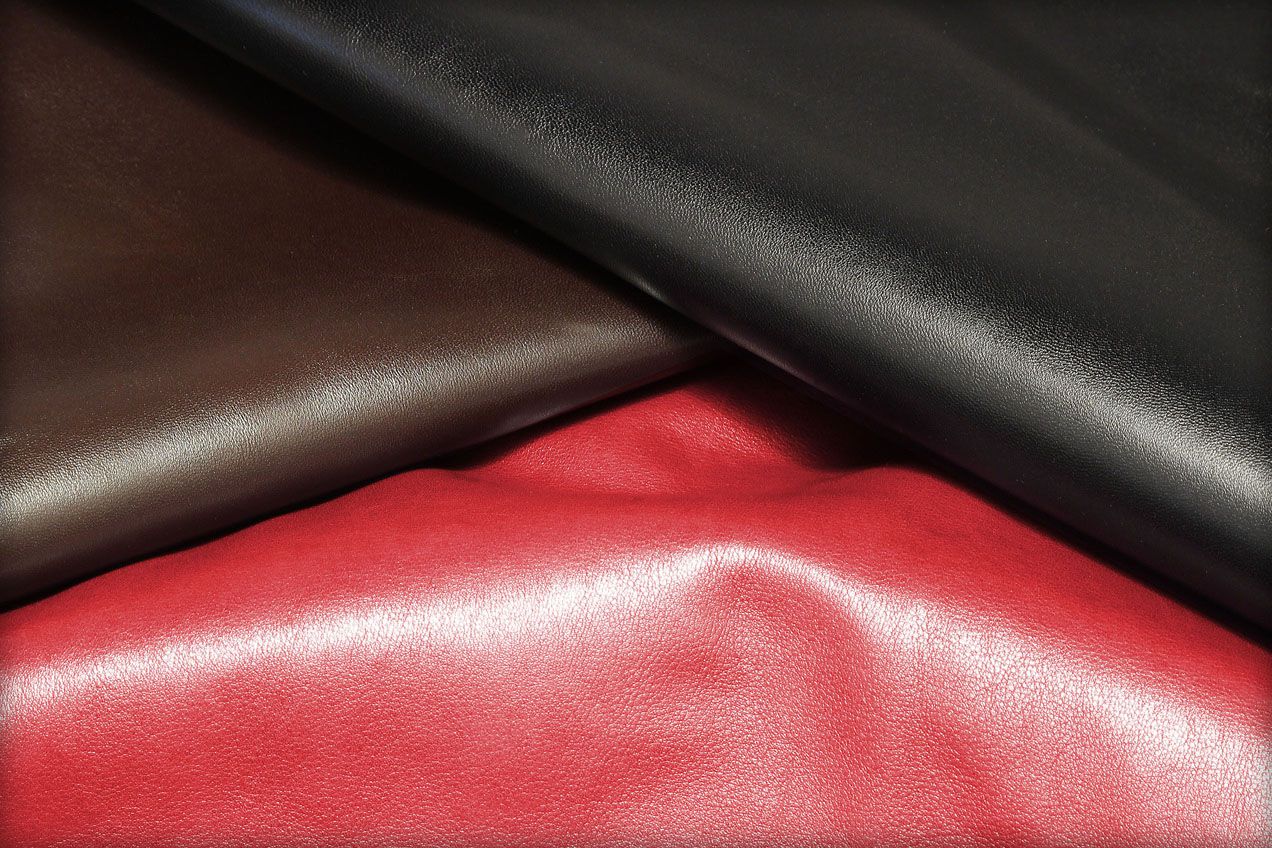
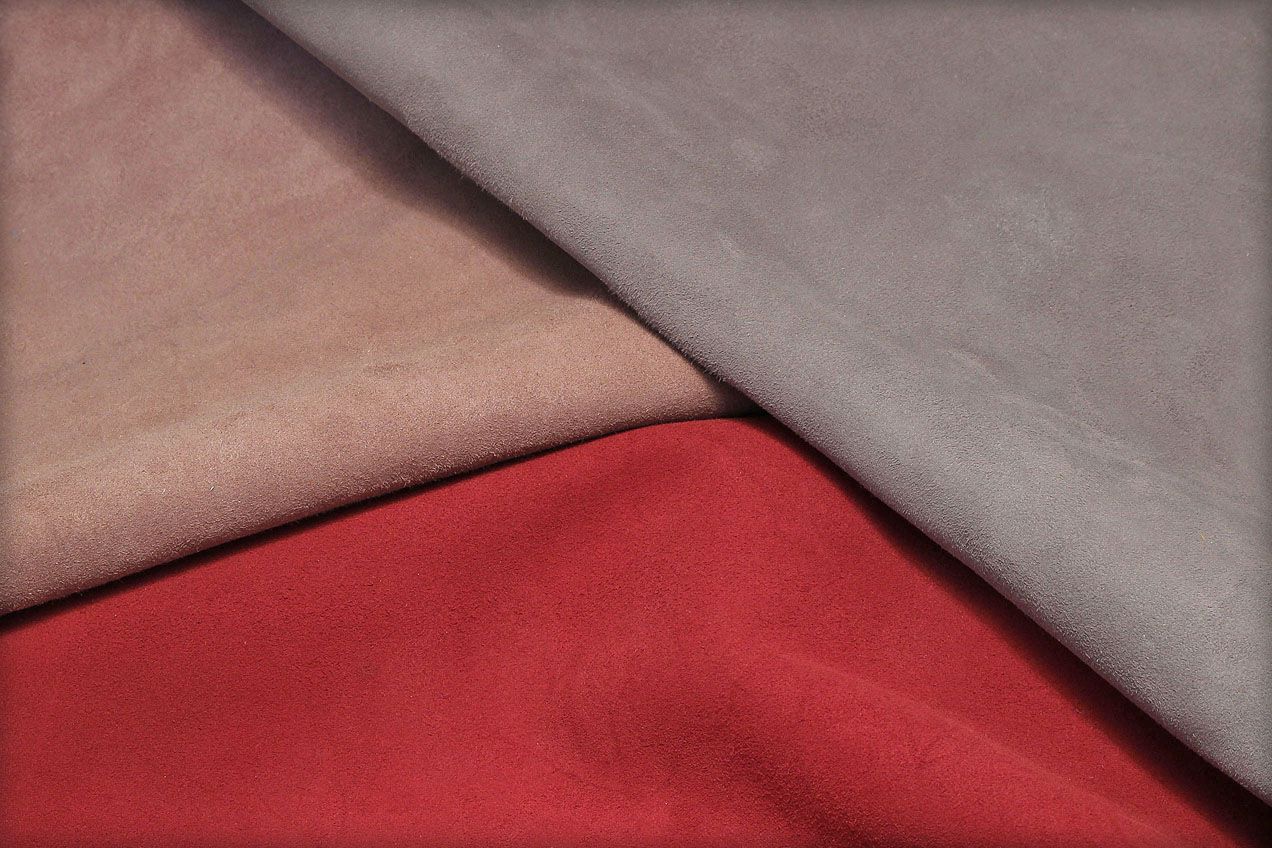

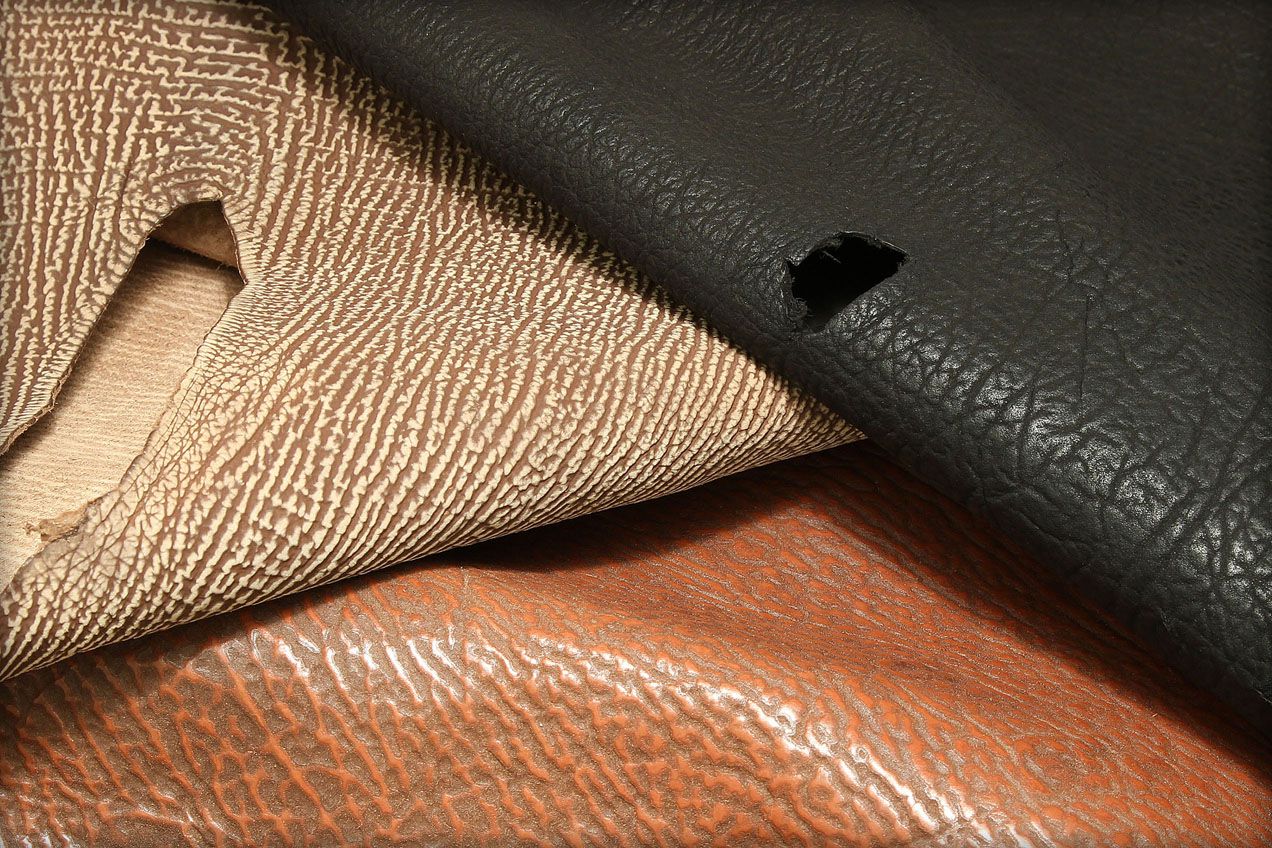

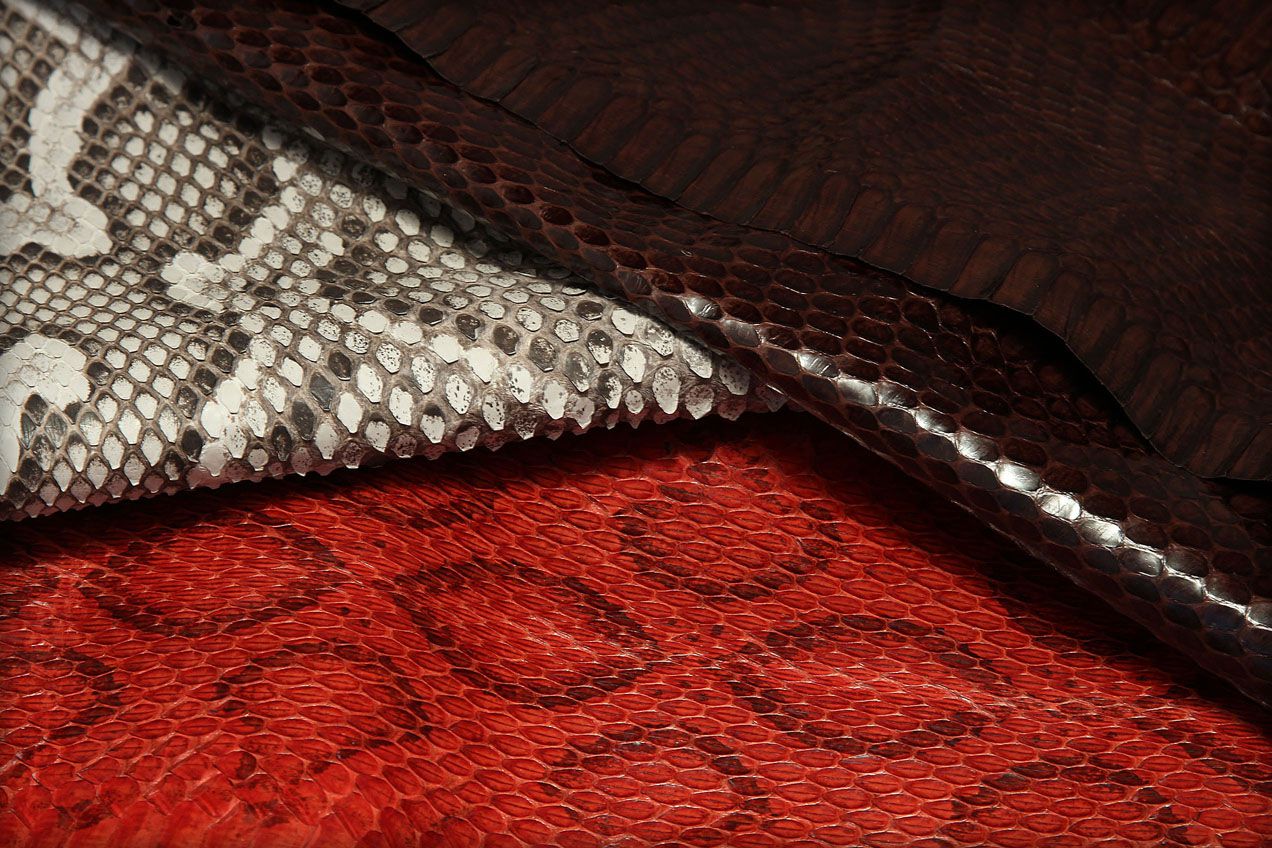
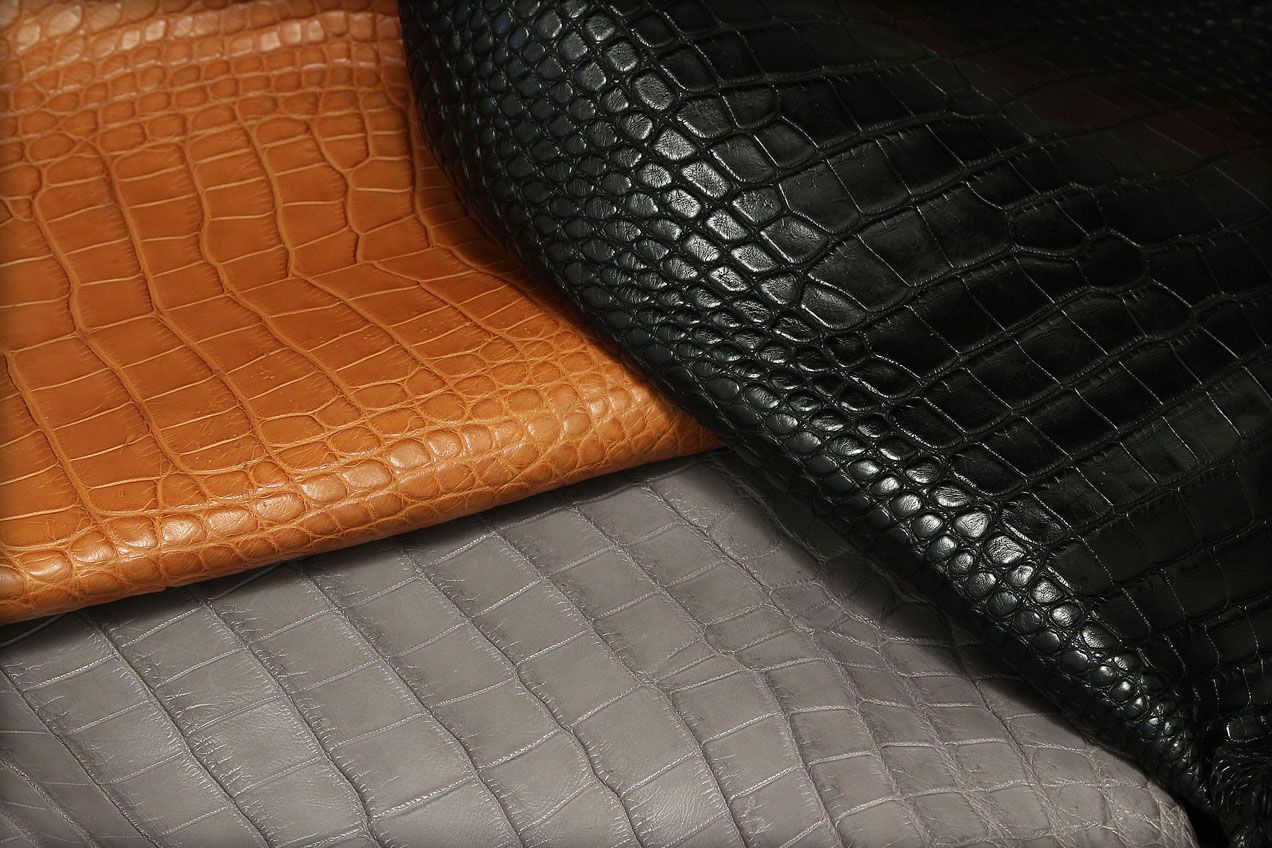
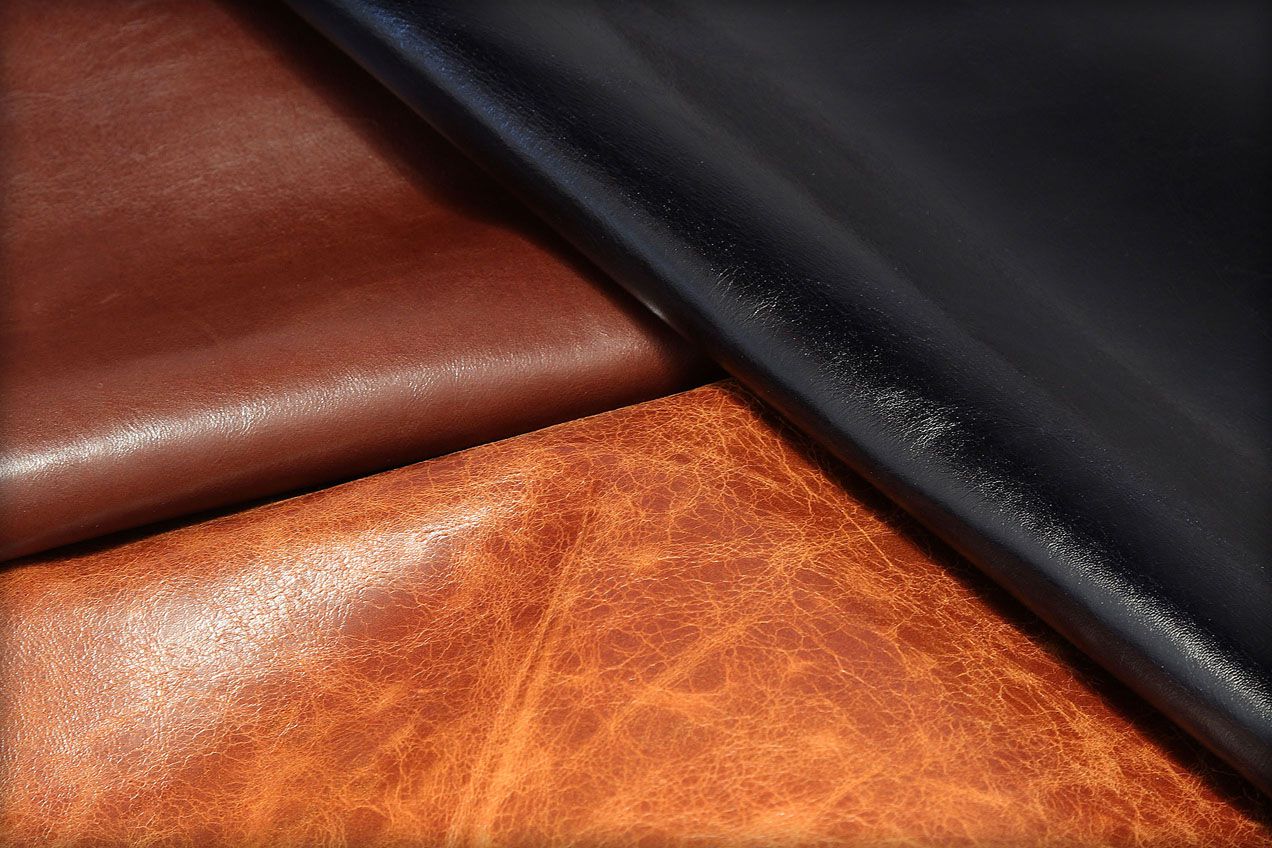
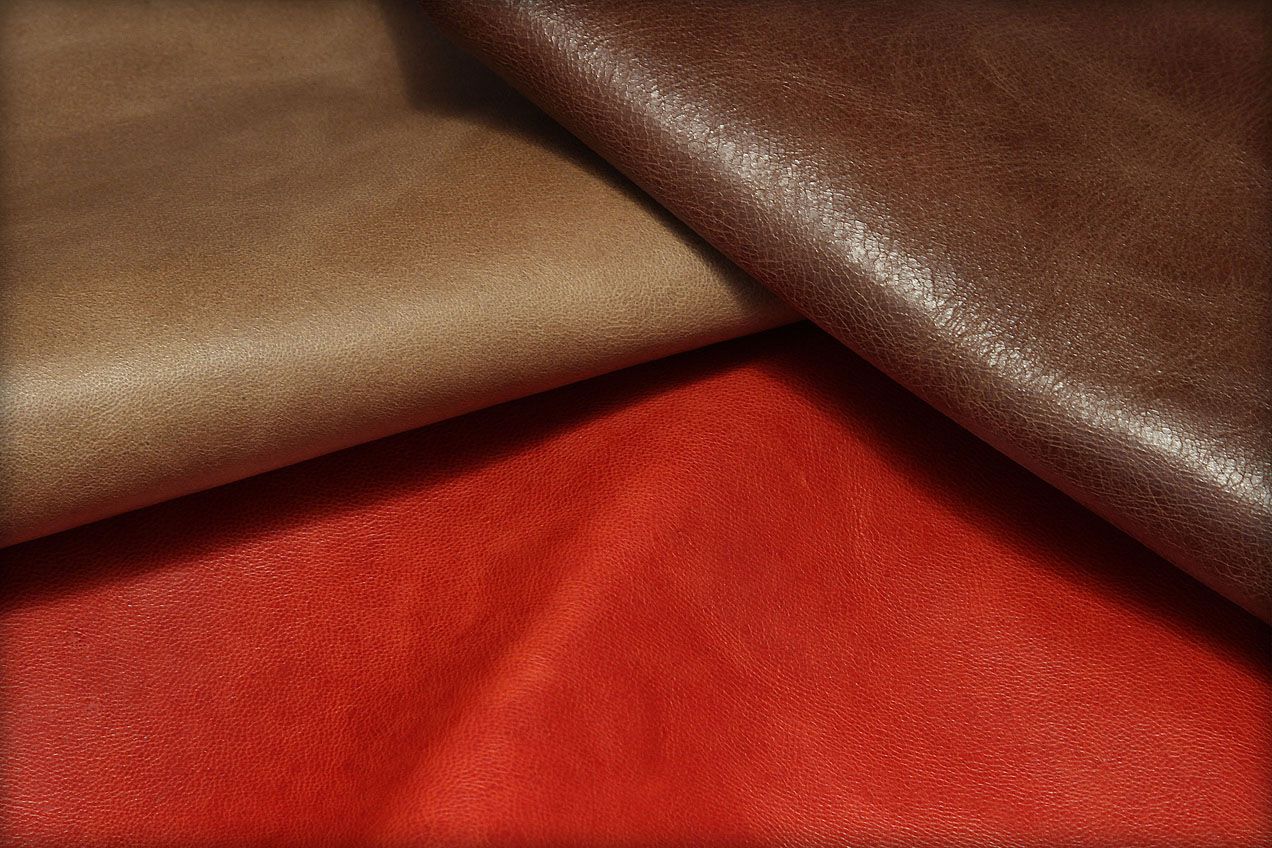
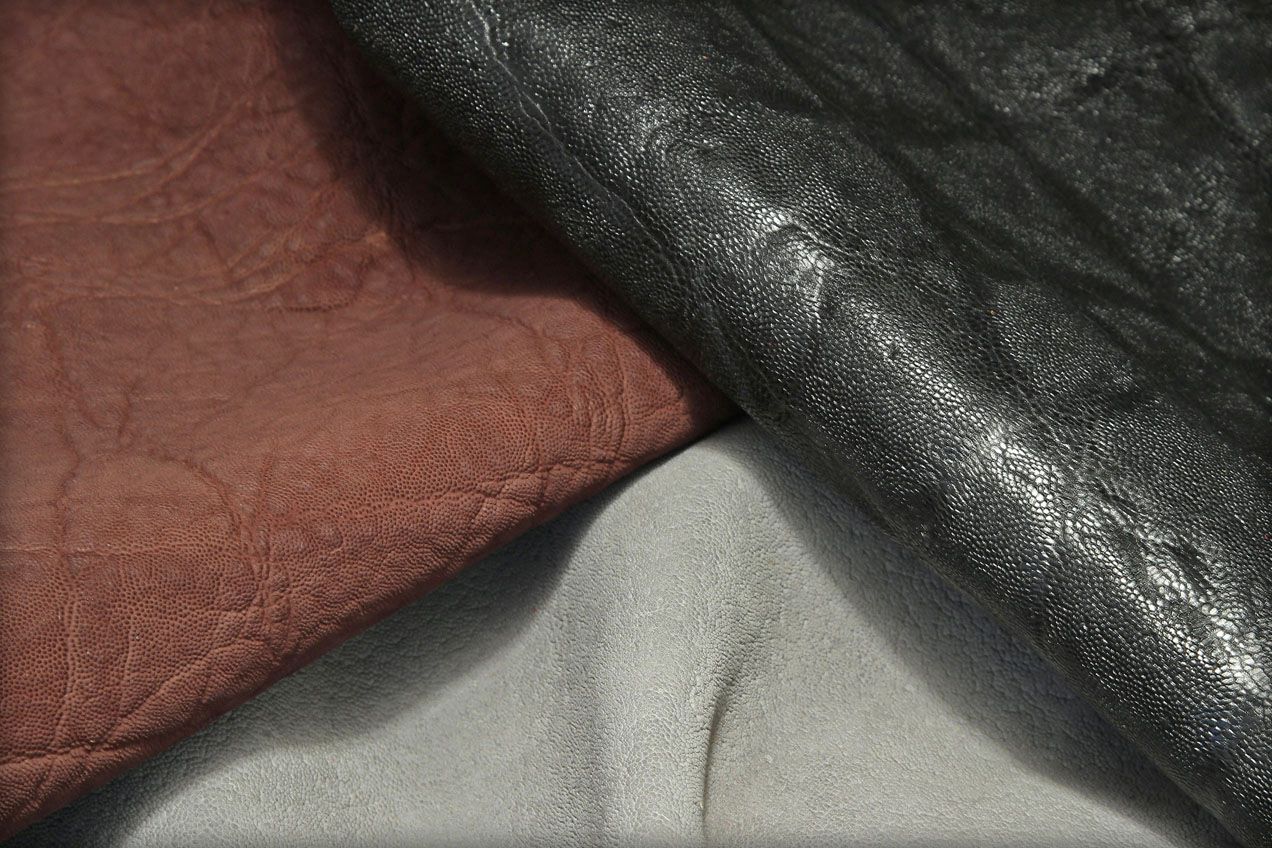
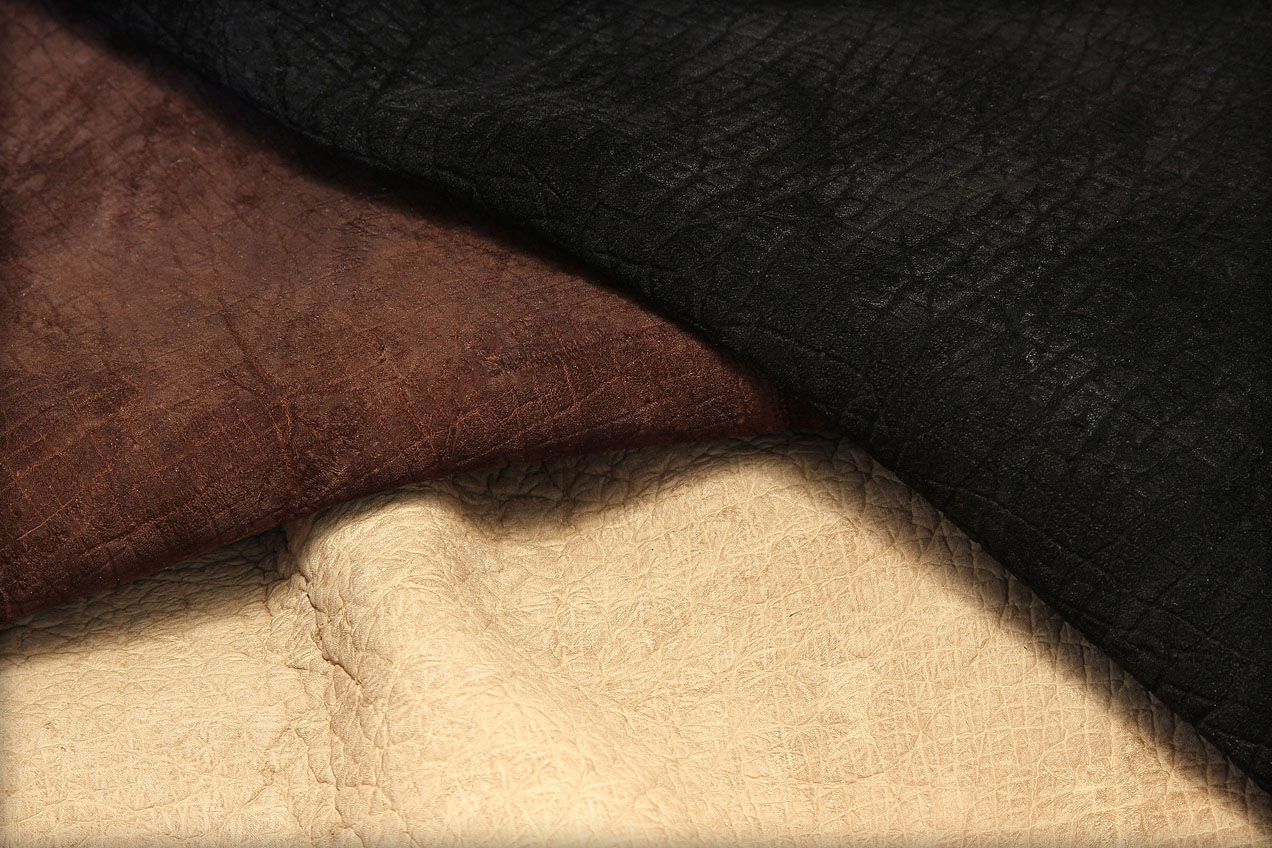
Calf leather
Calfskins are the most suitable type of leather for the upper parts of luxury shoes. They are characterized by a beautiful and easily maintained grain, and their taut structure makes them highly resistant to unfavorable weather conditions. We reserve thin skins measuring between 0.8 and 1.0 mm in thickness and ranging in size from 1.0 to 1.4 square meters for men’s evening shoes and women’s shoes. Thicker skins measuring around 1.2 mm are used for men’s everyday shoes and boots. In our workshop we use chrome tanned leather from Polish, French, German and Italian tanneries.
Suede
Very delicate, velvety leather with a napped finish. It is made from the underside of the skin. Because it lacks a grainy exterior layer, it breathes extremely well and is quite soft. Shoes made of suede are very comfortable. Suede up to 1 mm in thickness is made from the skin of sheep and goats, while suede exceeding 1 mm is made of calfskin.
Shell Cordovan
Leather between 1.2 and 1.6 mm thick is made from the rump of a horse. A special production process renders it exceptionally resistant to damage and leaking, making it an ideal choice for men’s fall and winter shoes. The best Cordovans come from the US and Argentina. They are also produced in Spain, Italy and Japan.
Shark leathers
The characteristic striped skin of the shark is among the most resilient types of skin. Although sharks attain massive proportions in the wild, only small specimens are used in the leather trade. Their skins measure between 1.0 and 1.6 mm in thickness and can have either a grained or a matte finish. The skins used in our workshop come from Mexico and Japan.
Ostrich leathers
These leathers are distinguished by the distinctive bumps left behind by thick feathers. Thanks to the numerous pores on the surface, the skin breathes very well and its softness makes it ideal for fitting to the shape of the foot. Shoes made of this leather are considered to be particularly comfortable. Ostrich farms may be found throughout the world. However, farms in the Republic of South Africa have long produced the highest quality hides.
Alligator leather
This is the most expensive and most coveted skin in the world. Despite the large, tough scales, advanced technological processes make it possible to obtain skins that are surprisingly soft. In the past decade, nubuck skins have aroused great interest alongside traditional, grained skins. Their varying thickness, ranging from 0.8 to 1.3 mm, depends on the animal’s sizes and species. In shoemaking, every shoe should be made from a single small skin roughly 35 cm in width. The best part is the belly, which due to its softness is considered more luxurious than the dorsal part. The leather used in making purses is cut from skins that can exceed 60 cm in width. The largest specimens living in the wild may weigh up to a ton and measure more than 7 meters in length. But in farms they are usually about a third of this size. Breeding farms are located in tropical regions in North and South America, Asia and Australia.
Kangaroo leathers
Worth considering due to their excellent usability. They are lightweight, thin, strong and highly durable. Kangaroos live in the wild amid thorny shrubs, so their skin is often covered with small scars. They measure around 1 mm in thickness. They come, of course, from Australia, some parts of which are truly plagued with them.
Elephant leathers
Skin from the sides of the largest land mammal can measure up to 4 square meters in area. It is highly irregular in texture and thickness. Elephant skins used in shoemaking and leather working are expected to measure 1.5 to 2 mm in thickness. They usually have a grained or nubuck finish, and are most often naturally earth-toned in color. The top exporters of elephant skins are the Republic of South Africa and Namibia.
Hippopotamus leather
These are similar to elephant skins, only thicker – between 1.5 and 2.5 mm. They are frequently covered with bruises and scars. They are tanned only as soft nubucks in natural colors. The supply of hippopotamus skins is extremely limited, which always makes them an attractive rarity.
Soles
The common characteristic of all hand-sewn shoes is that they have leather soles. One could argue that there is no such thing as an elegant shoe with soles made of anything but leather. Apart from its aesthetic value, this material boasts qualities that make it highly usable.
Najważniejszy to przepuszczalność powietrza. Uznaje się, że około 30% „oddychania” butów odbywa się przez skórzane podeszwy.
Another feature affecting how comfortable a pair of shoes feels is moisture absorption. In the course of several hours of activity, the feet of an adult may produce nearly 100 milliliters of water. Only natural leather is capable of absorbing such a dose of moisture.
Another advantage of leather soles is that they can be joined to the upper section of a shoe not by using the aggressive chemicals that glues are made of, but by sewing. This method enables us to create a product that is far more neutral for the body. Stitched leather soles can also be repaired much more frequently without negatively affecting the quality of a favorite pair of shoes.
The most appropriate type of leather for the soles of a pair of luxury shoes is calfskin middling, which is obtained from the thickest part of the dorsal section of a hide. A long-lasting vegetable tanning process leaves the skin taut, elastic and resistant to friction. In our workshop we use Italian middling leathers and German ones from the renowned Rendenbach tannery.


